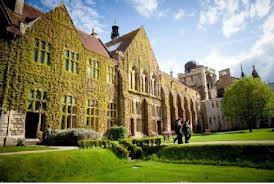Introduction

UK Independent Schools are renowned throughout the world for their excellence. Each school has a highly individual
character born from a particular history and ethos.
They compare favorably with state schools; offering smaller class sizes, academic excellence and a reputation for
producing well-rounded young individuals prepared for life in our fast-changing world.
Free from government control, independent schools have developed their own syllabuses and best teaching practices.
90% of all independent school pupils go on to university.
Independent schools seek to develop and nurture the individual abilities and talents of each child whilst instilling
a love of learning. With class sizes at independent schools being kept small, the needs of each child can be fully
met by caring dedicated staff members.
Facts and Figures
 The UK independent sector as a whole educates around 625,000 children which represents about 7% of the total. in around 2,600 schools.
There are approximately 2600 independent schools in the UK offering a wide range of choice.
The UK independent sector as a whole educates around 625,000 children which represents about 7% of the total. in around 2,600 schools.
There are approximately 2600 independent schools in the UK offering a wide range of choice.
The Independent Schools Council (ISC), comprising eight independent school associations, represent about 1,200
independent schools and 80% of all independent school pupils.
They conduct a census each year to assess trends and provide various statistics.
According to the 2013 census:
-
over 66,500 pupils board at ISC schools, making up roughly 13% of total pupil numbers.
-
ISC schools provide more than 300 million pounds annually in means-tested bursaries.
-
There is one teacher for every 9.4 pupils in ISC schools.
-
41.4% of pupils on means-tested bursaries have more than half of their fees remitted.
-
The total number of ISC pupils is down 0.3% on the previous year, however in the South East, particularly
Greater London, the numbers are increasing steeply.
-
51% of independent pupils are boys.
-
79.1% of year groups are coeducational, 12.4% are girls only and 8.4% boys only. The trend is towards mixed
classes.
-
64,414 pupils at ISC schools have been identified as having special educational needs (SEN).
-
Overseas pupils make up 5.1% of the total ISC pupil population.
Costs
Fees do vary throughout the regions of the UK by 30% or more, with Greater London being the most expensive. Throughout of the UK, average fees for
2013 are:
| Age Group |
Day Fee (Day School) |
Day Fee (Boarding Schools) |
Boarding Fee |
| Junior |
£3,613 |
£5,441 |
£6,793 |
| Senior |
£3,992 |
£4,840 |
£9,098 |
| Sixth Form |
£4,097 |
£5,441 |
£9,649 |
| Overall |
£3,835 |
£5,212 |
£9,204 |
Figures represent average fees per term and are based on fees at schools completing the ISC census.
The 2013 ISC census also revealed a total of 166,643 pupils received help with their fees, representing 33.7% of all
pupils. The total is more than £730 million per year. Approximately 85% of financial assistance comes directly from
the schools themselves, an increase of 4.9% on the previous year.
Schools gave approximately twice as much assistance in the form of bursaries as they did scholarships. Means-tested
bursaries were worth an average of £7,619 per pupil per year.